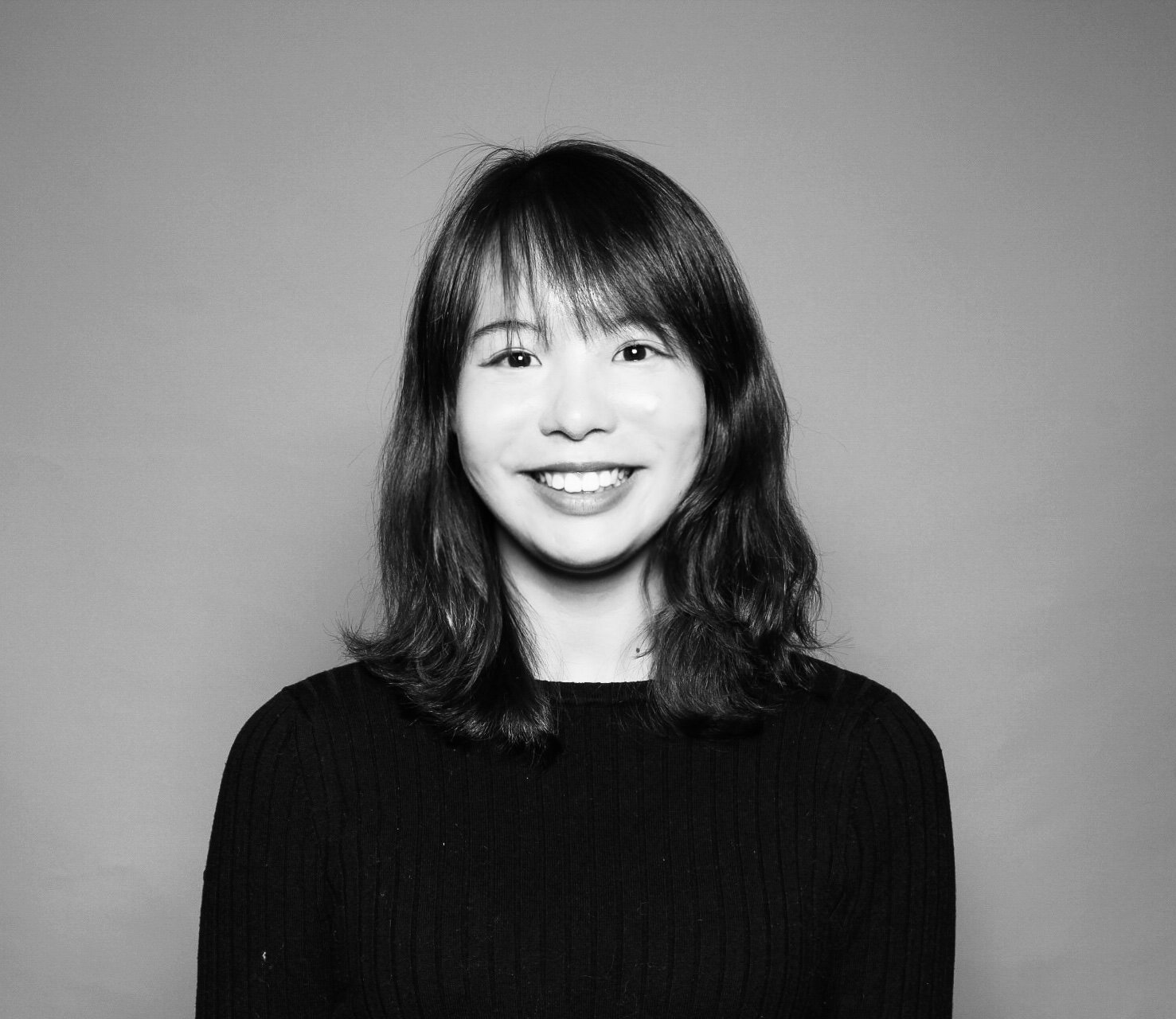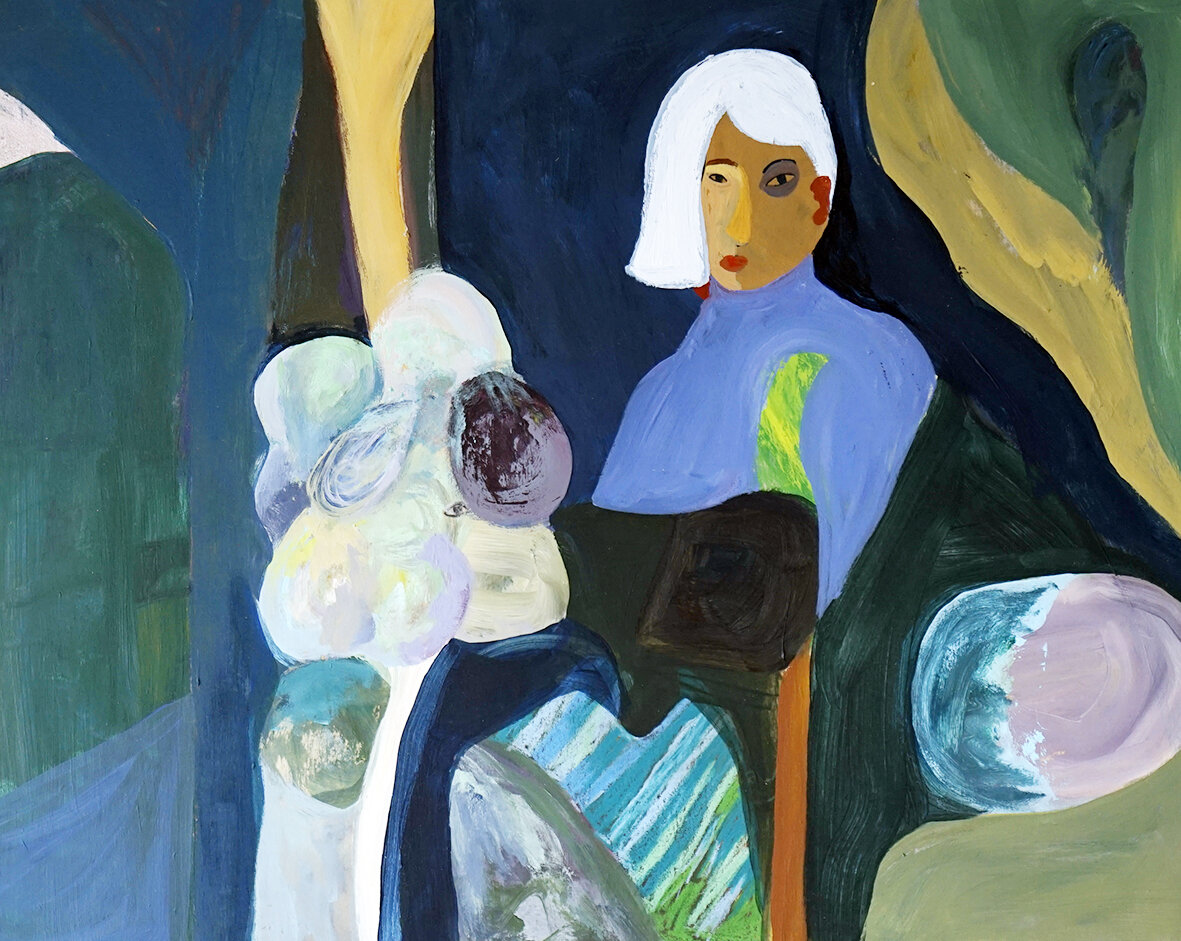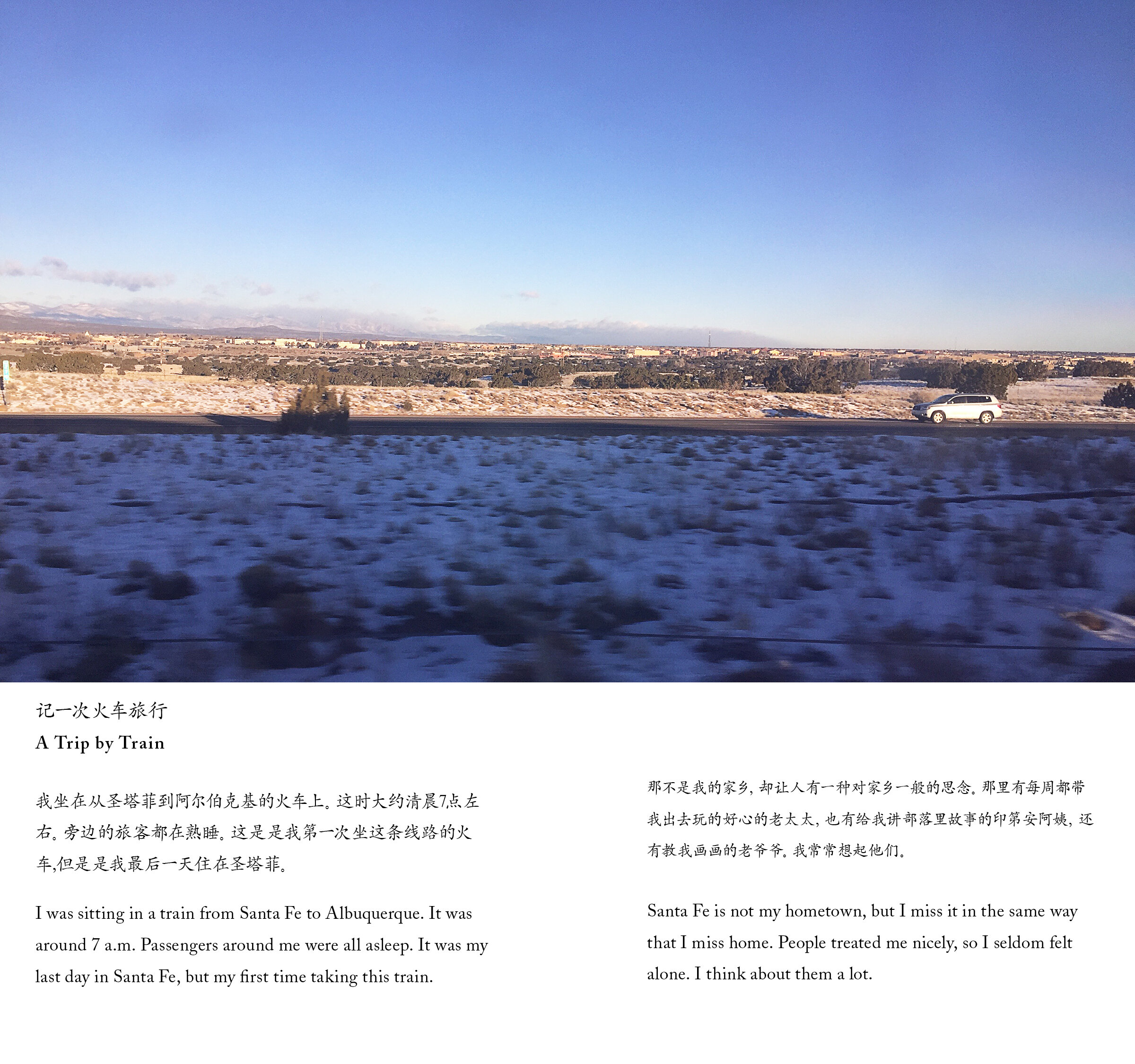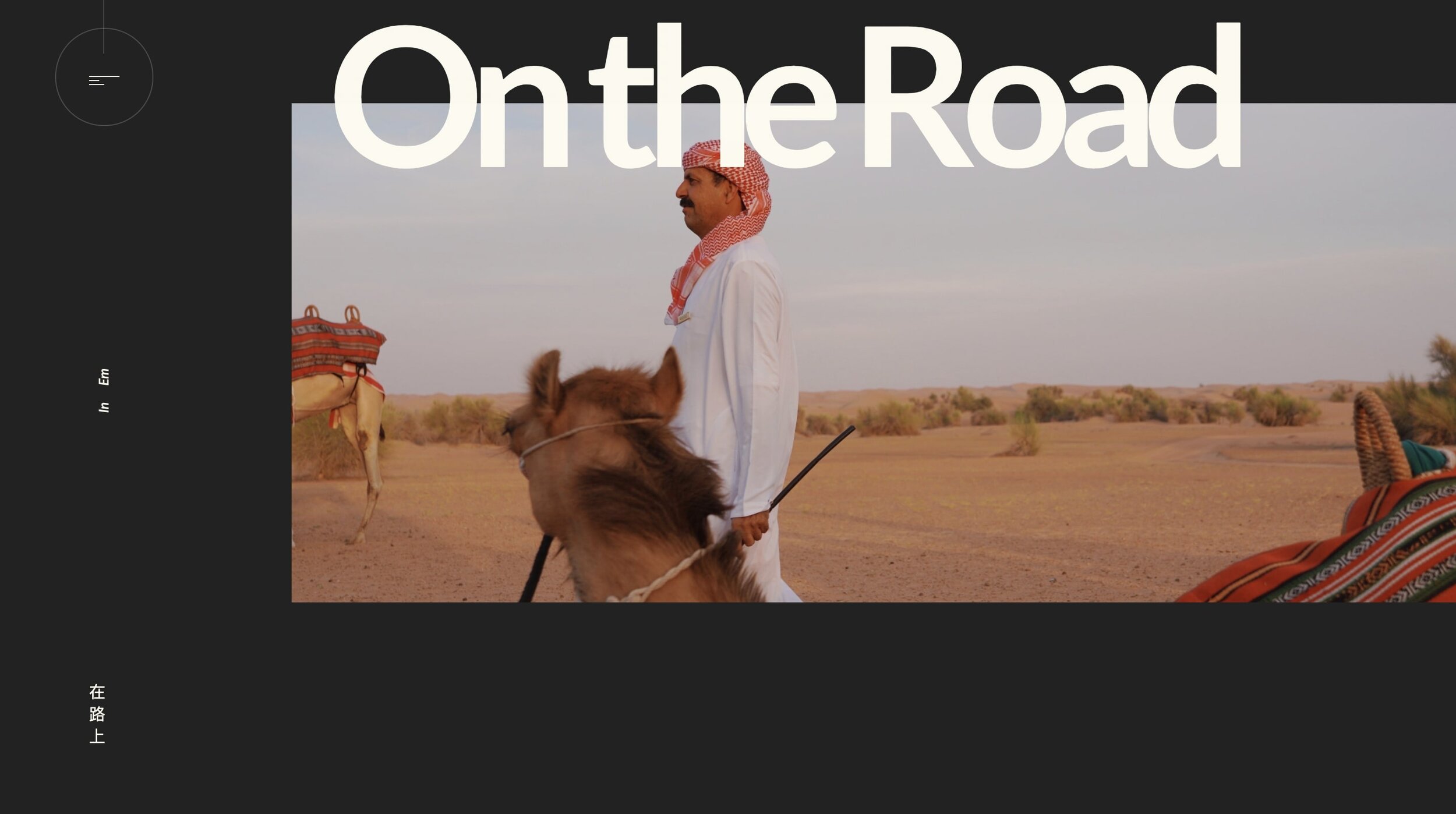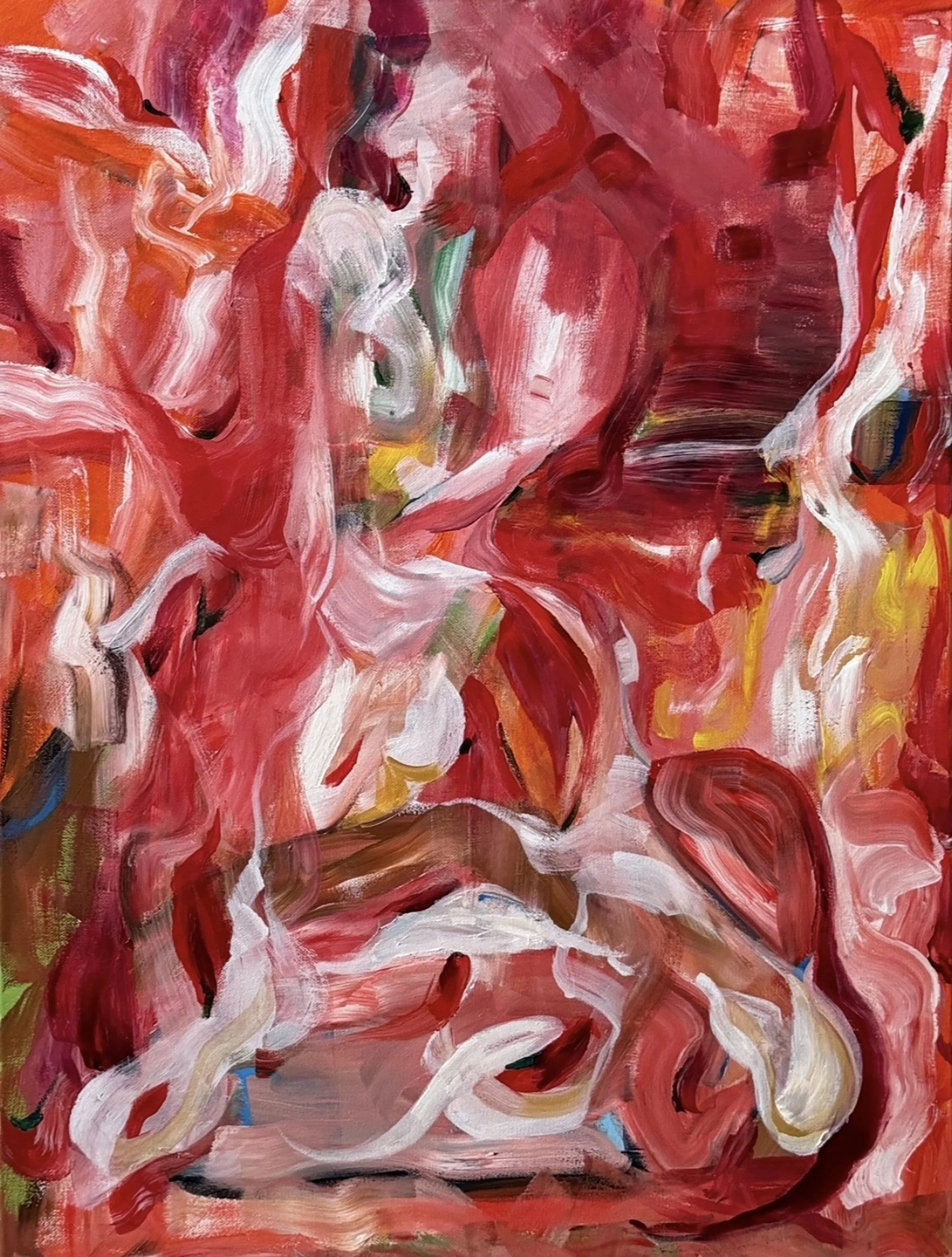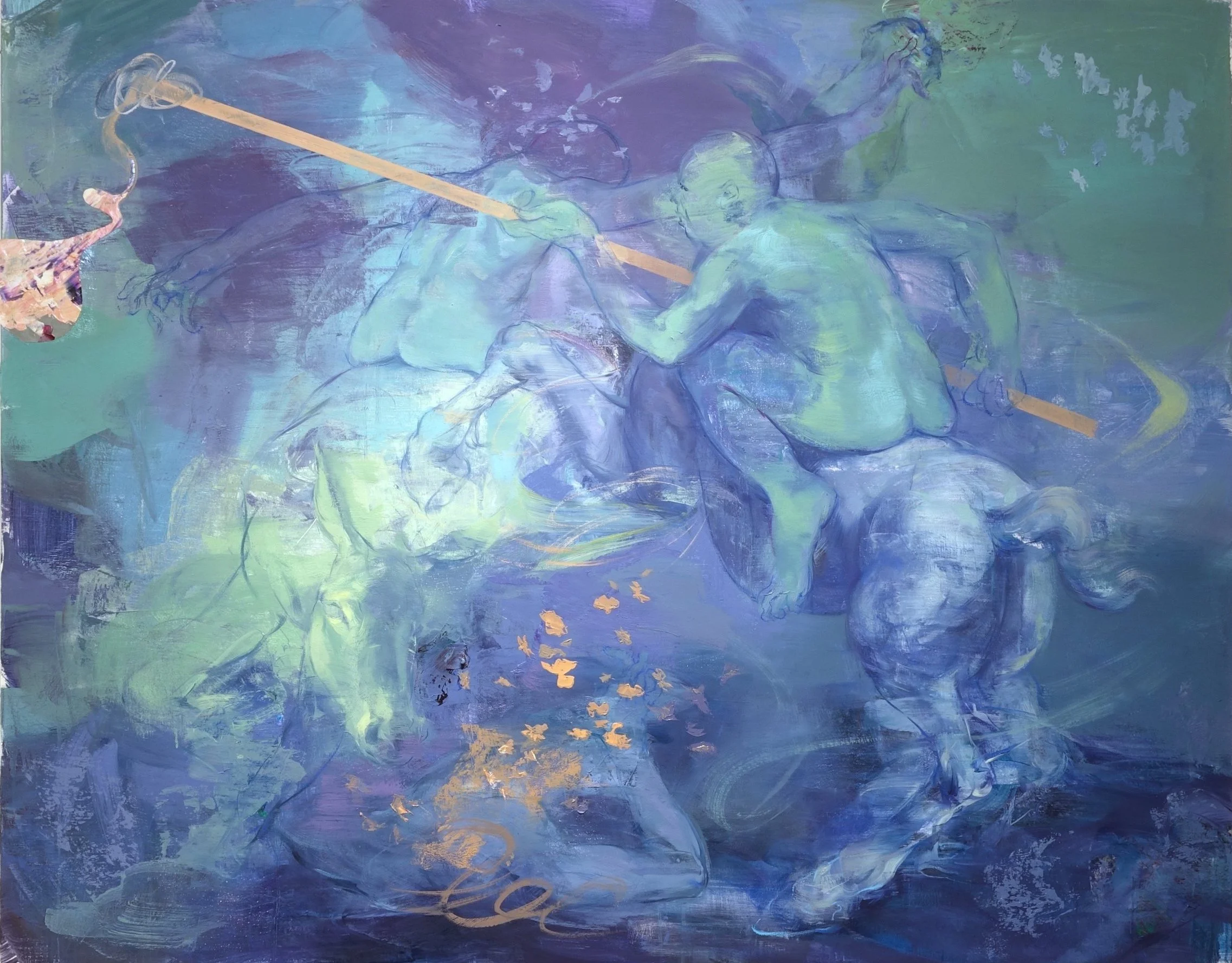10 Questions with Xiao He
Originally from Chengdu, China, and currently living and working in New York City, Xiao He is a multidisciplinary artist focusing on painting and visual communication design. Xiao graduated from the School of the Art Institute of Chicago in 2018 with a Bachelor of Fine Arts in Studio. A member of the Oil Painters of America association and recipient of 2021 GDUSA Design Award, Xiao has exhibited internationally at Genova Di Biennale(Genova, Italy), Upstream Gallery(New York, USA), Sullivan Gallery(Chicago, USA), and Zhou B Art Center(Chicago, USA). Her mixed media artists' book with original poems and photography is now part of the permanent collection at Joan Flasch Artists' Book collection in Chicago.
Xiao He Portrait
ARTIST STATEMENT
Xiao was born in southwest China. She grew up living with different relatives following her father's bankruptcy and divorce, sometimes in an aunt's glamorous apartment for months, sometimes in a temporary shelter inside a candy store for years. She later moved to the United States for school at 16 and has lived there ever since. The constant change of locations makes her aware of and interested in the meaning of home and being on the road.
In her works, Xiao records ordinary life moments such as soaking in the warm bathtub as well as random conversations that she had with a stranger in Mexico. One can also find elements such as stage scenes of Broadway musicals, Southwest Chinese folklore told by her grandma, a fictional girl with a missing finger, 1980s Taiwan rock music in her works. Consciousness the magician would fabricate these fragments together, and she records them faithfully, in the form of paintings and artist's books.
Xiao would like to use her personal experience as a starting point on what home and being on the road mean for travelers and immigrants and represent the ordinary lives of people moving across borders and languages in her artwork. If she could do these, she thinks her works have then fulfilled their mission.
AL-TIBA9 ART MAGAZINE ISSUE18
INTERVIEW
In your statement, you quote your personal experience as the starting point of your work. Tell us more about it. What is your personal background, and how does it influence your work?
I was born in Southwest China in the 1990s. I remember when I was in primary school, we would learn about the revolutionary heroes from Modern Chinese history in the class or recite long ancient poems in classical Chinese. Then, after school, kids would rush back home to watch Tom and Jerry on the TV. This was my first encounter with the mix between Eastern and Western culture in my life.
Later on, when I was 16 years old, I came to the United States for college and have stayed here ever since. The personal experience of living through the intersection of two cultures shapes my identity. The hybrid situation makes me see things from two perspectives, and notice certain things that others overlook. For example, I saw an Ushanka, Russian fur cap in a thrift store in New York the other day. It immediately reminded me of the same cap that my grandpa, a retired ranger in the Tibetan region, had and still keeps in his apartment even after retirement. To express this memory, I painted that cap in East Village II.
The Real Self, acrylic on wood, 18x24 inch, 2021 © Xiao He
What about your studies? What was your path to become an artist like?
I thought I would be an engineer or scientist when I was a child. In China, high school students usually have to pick either a liberal arts or a science track, and I picked the science track without much hesitation. However, when it was time to go to college, my family decided to send me abroad for a better education. I first went to a liberal arts college in the United States, and I distinctly remember the summer of my freshman year. There was an International Folk Art Market happening in Santa Fe, and the organization was looking for Chinese Interpreter volunteers. I signed up and was assigned to a Tibetan Thangka Artist, Gesang. During that one week, I followed him, helped him translate his ideas to visitors, and learned about the mineral pigments and the ratios in Thangka paintings.
What struck me the most was his enthusiasm and almost religious devotion to Thangka, insistence on introducing Thangka to a broader Western audience, and effort to keep this thousand-year-old art tradition alive in the tides of the contemporary art world. I was deeply moved and thought this was something I wanted to do - to be an artist. So, in the following winter, I transferred to the School of the Art Institute of Chicago, and my path as an artist began there.
You work both with paintings and artist's books. How do they relate to each other? Do they have common themes, or do you work on the two mediums separately?
For me, paintings are more planned out, whether in the studio or when I'm traveling. I usually start gathering sketches to try out different compositions, sometimes with my eyes closed. Once a preliminary drawing is set, I start to put down the paint and work towards the image I have in mind.
Artist's books are usually more open-ended and take more coincidence. It can be conversations that I had with a girl in some coffee shop in Guadalajara, Mexico, or a legend I learned from my father when we were hiking in the deep mountains. I believe artist's books and paintings originate from similar inspirations, but the final form of representation varies. Sometimes it makes more sense to represent what I experienced visually; other times, it makes more sense to use the language itself or the photos captured at that very moment.
A Collection of Random Thoughts, Artist Book © Xiao He
In your work, you narrate stories, often dealing with the notions such as home or being on the road, as for travelers and immigrants. Why did you choose artist's books, and how does this medium help you create your narratives?
I see artist's books as a container for seeds of inspiration. They are ways to quickly note thoughts down fleeting ideas. Artist's books often reminded me of my hometown's hot pot, a spicy soup base where people can put all kinds of ingredients into it. Plain ingredients like mushrooms and cabbage go into the hot pot and come out with harmonious and tasty flavors. Artist's books are just like hot pot for me in that they are inclusive enough to organically bind texts, photos, fabric, and drawings altogether, and the end results are dynamic narratives totally different from the previous contextless raw materials.
What do you see as the strengths of your work? And how do you see it evolving over the next few years?
The abundant pieces of visual elements as the strengths in my paintings. There are many objects or figures placed next to each other, and I hope viewers can weave their own stories into my work when they are looking at it.
Going forward, I hope to incorporate more figurative subject matters into my paintings. As George Gerbner said, representation in the fictional world signifies social existence; absence means symbolic annihilation. I find it true and frightening at the same time. If people like me, Asians, immigrants are not represented, we are absent in the world. We have already been absent for so long already in art history.
I also hope to utilize Chinese traditional art forms, such as Sichuan Opera and leather shadow puppets. Like what the Tibetan artists do for Thangka, I, too, feel an urge to blend the traditional art forms into my paintings because that is where I come from.
A trip to Guadalajara, Artist Book © Xiao He
Apart from your personal experience, in your work, we can find many different references, such as "Broadway musicals, Southwest Chinese folklore, 1980s Taiwan rock music", just to name a few. How did you use these references? And why did you incorporate them in your work?
The references are more inspirational or conceptual rather than literal representations. For example, Broadway musicals usually have very staged scenes to create an illusion of a castle or someone's apartment to the viewers. I became interested in the props and the flat, shallow sense of space in musical stages. Following this interest, I drew a bathtub in Bathtub Soprano with some hangers and curtain fabric to recreate a staged bathroom feeling. At that time, I was very into 1980s Taiwan rock music. As a former soprano in some choir, I like singing in the bathroom a lot. It may sound a little weird, but the bathroom is actually a pleasant acoustic environment. Therefore I used that reference into Bathtub Soprano, where you can see a woman half choked, half-singing in the bathtub.
Another example is the hand with a missing finger in East Village II. When I watched Wes Anderson's film The Royal Tenenbaums, some of the plots reminded me of my grandma's Sichuan folklore when I was very little. It was said that a bear disguised as a nanny would chew the fingers of a little girl at night. People used that to scare kids into going to sleep early instead of running around. I was very scared of that folklore, and still am even today. The following day when I continue the painting East Village II, I just cannot wave away the image of a hand with a missing finger from my head, so it has become a source of inspiration in this art piece.
As a traveler and immigrant yourself, you often reference this condition in your work. How important is your Asian heritage for your work? And how much does living in the USA influence your perception of your heritage?
It never occurred to me that I was "Asian" when I was in China because we have similar ethnicities. At that time, I thought people with different Mandarin accents or from different provinces would be the largest differences you can see.
When I came to the US, I was suddenly constantly reminded of my identity - guys would call me "my Chinese princess" and people would refer to me and my friend as "oh, I'm with two Asian girls". At the same time, I wasn't born in the US and didn't grow up speaking English or watching the same TV shows that Asian Americans grew up with, so it is difficult to identify with the Asian American community. I also sadly realize that I am a stranger even when I visit home in China. It feels like what Ifemelu, the young Nigerian woman in Americanah was talking about. I am hoping to grasp my roots, so I don't get lost. In recent years I feel an urge to trace back to my cultural roots and bring it to my work, both conceptually and visually.
On The Road, Artist Book © Xiao He
What do you think of digital exhibitions and presentations? Are you experimenting with these, or are you into more traditional ways of presenting your work, like physical exhibitions in galleries and museums?
I am very open to digital exhibitions and presentations, particularly because they are not limited to any city or geography. In addition, shipping large artworks to different exhibitions and other required logistics in physical exhibitions take too much time and energy away from actually creating the works.
However, if I had the choice, I would still prefer more a traditional way of showing my work in a physical space. The scale really matters. A small landscape painting with the size of a book might be considered cute, but the impact the art could make if it were to be 2 meters wide and 3 meters high would be monumental. It could create a Wow feeling, and people have to step back to see the overall piece and then step closer to see the details. This is an experience digital screen cannot provide, even with the function to zoom in and out. Another reason is the context of seeing. A viewer might be shopping for a Sephora lipstick online just 30 seconds prior to opening the digital exhibition webpage, giving them a more superficial mindset. Whereas in a gallery or museum, viewers go through the door, enter the exhibition, take the time to look at and read the introductions, and then look at the works. From the artist's point of view, I believe the latter is better.
What do you hope to accomplish this year, both in terms of career goals and personal life?
I hope I can read more books and paint more this year. Right now I'm working on a painting for an exhibition in Barcelona in December. If everything goes well, I will also visit Barcelona for a month-long artist residency later this year. Personal goal-wise, I hope Zero, my 1-year-old Bichon puppy, can stop chewing on my pencils and brushes.
Finally, what are you working on right now? Anything exciting you would like to tell our readers?
Next week I'm going to make a cross-US road trip. The plan is to drive from New York to Charleston in South Carolina, across New Orleans, then to Austin, and finally to San Diego for a half marathon race. I will take my travel easel and acrylic paints with me so I can do more paintings on the road. I'm very excited to try out the New Orleans-style coffee!


